
Ever wonder how Dollar Shave Club turned razor subscriptions into a billion dollar exit? Or how LaCroix’s fans strong-armed their beloved bubbly’s way to the top of the sparkling water food chain? The answer is simple. They inspire impressive devotion from their large fan bases.
That’s especially true among Millennials -- 62% of them tend to stick with one brand, compared to 54% of the population at-large. How does a brand garner that kind of advocacy? I found myself asking the same question, so I compiled a list of 19 brands with faithful followings, along with the marketing tactics that might contribute to their cult status. 
Note: It’s easy to look at the behemoth brands below and feel a little overwhelmed. From one marketer to another, stop, breathe deeply, and give yourself a break. The strategies these brands employ don’t require billions of dollars or global teams. They’re simple enough that even a lone marketer can incorporate them into their next campaign -- that’s why we love them.
19 Brands with a Cult Following (and What You Can Learn From Them)
1) Southwest Airlines
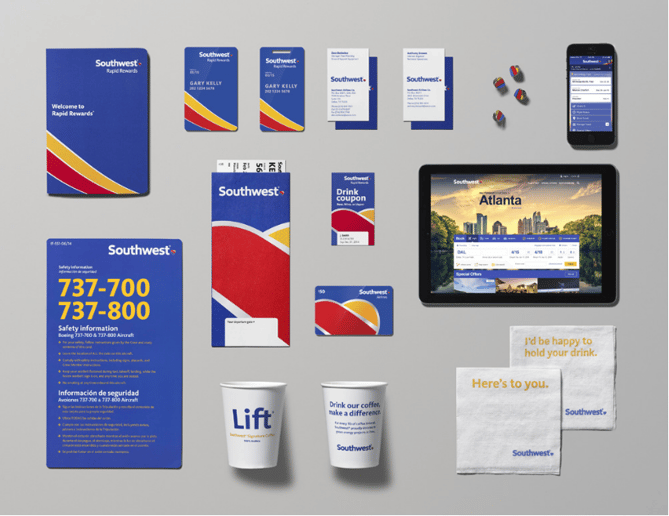
Source: Brand New
When I say Southwest, you probably think of cheap fares, funny flight attendants, and drink coupons. If you also think of great branding, there’s a reason for that. In September 2014, Southwest unveiled a branding refresh that earned positive media attention and made marketers swoon.
Southwest rolled out a PR campaign for its rebrand, explaining the reasoning and research behind the airline’s new look. It included videos that maintained the company’s playful brand voice while touting the new message, “Without a heart, it’s just a machine.” Southwest proved that sharing its new identity was as much a part of the rebrand as the redesigned packages of peanuts.
Branding Best Practice: Own Your Rebrand
Your rebrand may not be at the scale of a major airline, but it’s still a big undertaking, so don’t hide the results. And remember, it works in a number of sectors -- at least half of nonprofits, for example, say that a rebrand has increased their revenue.
Use your rebrand as a way to create buzz within your industry. Make it clear why you felt a rebrand was necessary, how you considered your audience, and what the positive results will be. Think of it as another way to reinforce your new image and foster adoption of your refreshed identity.
2) LaCroix

Source: LaCroix
Do you know someone who’s obsessed with LaCroix? Hypothetically, you might be addicted to the fizzy water yourself (raises hand slowly). Sales for the bubbly drink have more than doubled over the past two years, but chances are, you won’t see a ton of LaCroix TV ads.
Instead, LaCroix has executed some impressive social media campaigns, specifically with Instagram. In 2015, the brand grew its Instagram followers from 4,000 to 30,000 in just eight months. Today, it has almost 60,000 followers.
But how? First, LaCroix engages with anyone who tags the brand, no matter their number of followers. If you’re lucky, you might even receive a free case of Pamplemousse for posting a photo. Second, LaCroix is quick to adopt relevant trending hashtags like #Whole30approved (to promote its partnership with Whole30 nutrition) and branded ones like #LiveLaCroix. Third, Instagram micro-influencers are smartly targeted with free products and other perks in exchange for featuring LaCroix in lifestyle images shared with their large following.
Branding Best Practice: Discover Where Your Audience Hangs Out
Find out who your target audience is and where they’re hanging out. LaCroix knew that 55% of online 18-29-year-olds are active on Instagram and doubled down on efforts there. By promoting user-generated photos and rewarding influencers, LaCroix went from sitting on dusty grocery store shelves to becoming a drink of choice for Millennials.
3) In-N-Out
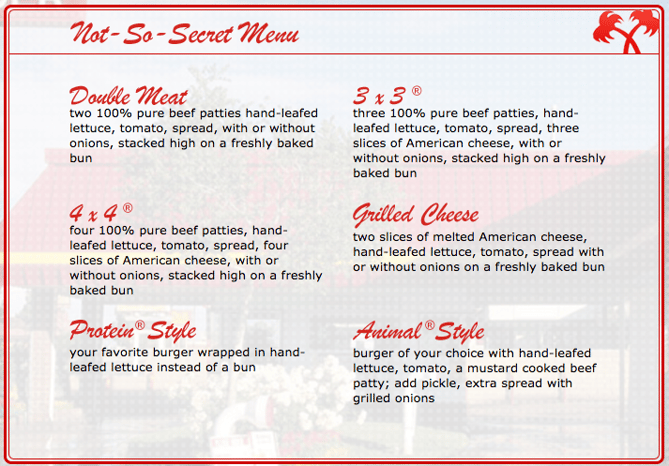
Source: In-N-Out
Let’s not even get started on the In-N-Out vs. Five Guys and Shake Shack debate. That’s a blog for a different day (and, probably, a different website). But if you’ve been to California, you might have made at least one stop for a Double-Double Animal Style -- one of In-N-Out’s more notable menu items. And, the chain maintains its fervent following by knowing that meals like that are part of its brand, even being a bit protective of it.
The brand is comprised of burgers, fries, and shakes, as it has been for 68 years, insulating it from fad-food missteps. And while it’s tough to find an In-N-Out beyond the west coast, the brand extends much further. In September 2016, a pop-up shop came to London, selling out of burgers in an hour. “These events also help to protect the In-N-Out Burger brand,” the company said in a statement, “in important regions like England and Southeast Asia.”
Branding Best Practice: Protect Your Brands
It’s been said that your brand is more important than the product or service you sell. Building a brand strategy, getting buy-in from your team, and sticking to the plan are important parts of ensuring that your marketing efforts reinforce your brand standards.
4) Trader Joe’s
Source: Trader Joe's
Trader Joe’s products draw levels of adoration that would make something like pumpkin spice jealous. (I mean, hello, cookie butter.)
So what’s the secret sauce in the brand’s marketing efforts? Well, the funny thing is, it doesn’t really have any. Trader Joe’s doesn’t have an official Facebook, Twitter, or Instagram account, nor will you see television ads. What it does offer are great products that the brand is openly passionate about.
But they have discovered one thing that works. The Trader Joe’s Fearless Flyer newsletter is one of the brand’s dedicated marketing channels -- and people seem to love it. With a selection of featured items and an astonishing amount of copy, the Flyer waxes eloquent on Trader Joe’s hotdogs, apple cider, and more.
Branding Best Practice: Be Strategic About the Channels You Engage In
What the success of Trader Joe’s doesn’t mean: you should shut down all marketing channels and “let your product speak for itself.” Unless you start selling products like cookie butter by the gallon, that strategy probably isn’t right for you. But it does mean that stepping back and taking an unbiased look at which unconventional channels could work for you. What’s your brand’s “Fearless Flyer”? Figure out what makes your brand different, and capitalize on it with something unexpected.
5) Saturday Night Live

Source: Giphy
Saturday Night Live (SNL) first aired in 1975. And while a 41-year run is prone to its share of tough seasons and dry spells, this sketch variety has remained strong and relevant.
While a talented cast might be the backbone of the show, it’s the weekly guest hosts and musical talent that keep each episode topical and trending. That impressive lineup allows SNL to leverage current events (e.g., when Ronda Rousey hosted after her impressive six-win UFC streak). It also allows the show to test out different hosts and bring back fan favorites, like Justin Timberlake.
Branding Best Practice: Incorporate Guest Contributions Into Your Content Strategy
While having a strong, core content team is important, guest contributions are a great way to keep your brand relevant and credible. But remember -- these guests have to be aligned with your brand. Think of it as a co-marketing agreement. These partnerships have to be strategic and both parties have to benefit from it. Check out our tips on how co-marketing works in branding here.
6) IKEA
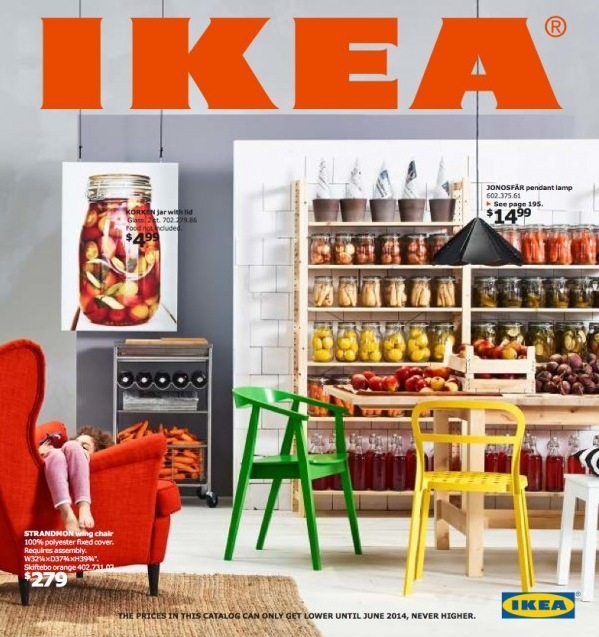
Source: Home Designing
IKEA has a simple vision: “to create a better everyday life for the many people.” And while some patrons might give credit to the in-store meatballs -- the brand is rumored to sell three million each day -- IKEA turns to research to learn what its consumers really want.
But there’s no reliance on customer surveys and downloaded data. Instead, design experts are actually sent into people’s homes to learn what’s important to them and what their pain points are. That information is funneled into content that’s relevant to customers, ranging from the brand’s over 50-year-old catalogue, to the award-winning web series “Easy to Assemble,” which ran for four seasons.
Branding Best Practice: Do More Than Audience Surveys
Understanding your audience goes deeper than sending out a survey. That’s said to be especially true of Millennials, who are more interested in conversing with a brand (see LaCroix’s Instagram example above) than spending time on a questionnaire. Finding out what motivates and challenges your consumers is arguably the most important part of a marketer’s job, which also means you have to allocate your marketing time and resources accordingly. Focus on the conversation -- engagement through social media and other conversation-centric platforms can help bring your user personas to life.
7) Dollar Shave Club
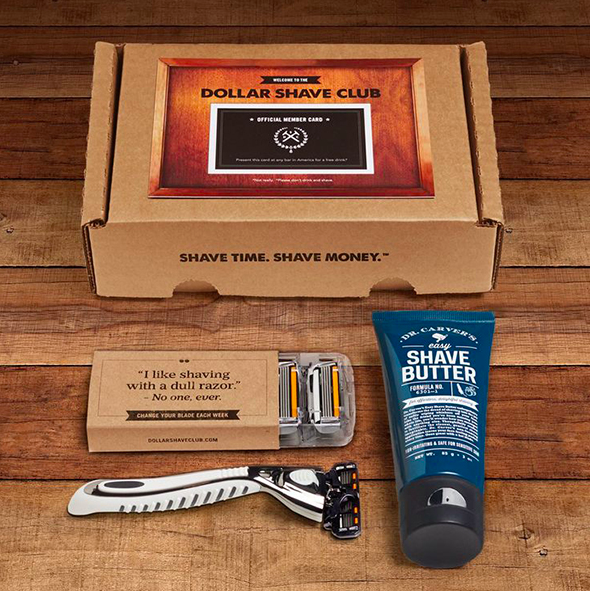
Source: Brandfolder
Razors are not exactly an exciting topic. In fact, they’re probably a topic that most of us avoid discussing -- because, gross. But when Dollar Shave Club (DSC) burst onto the startup scene in 2012 with a launch video that people are still talking about, it made shaving worth talking about.
The deep care for the brand is often evident, like in one interview with Brandfolder: “From our packaging to our digital presence, the DSC brand identity informs everything we do.” That devotion to the brand shines through every piece of marketing content produced. From witty emails, to carefully branded packaging that makes you stop and read your razor wrappers, DSC’s brand is carefully and craftily infused into everything they do.
Branding Best Practice: Organize Your Brand Assets
How do you incorporate your brand identity into each piece of marketing you own? With brand consistency. While your brand might have several moving parts, they have to be cohesive -- in fact, 90% of consumers expect this kind of consistency across all channels, especially when shopping for a product or service. Not sure where your brand inconsistencies might be hiding? Check out this list.
And once you have achieved that consistency, consider using digital asset management: the technology that makes any of your digital branding collateral -- logos, images, and standards, to name a few -- easily accessible to your team (and ready to implement).
8) Apple
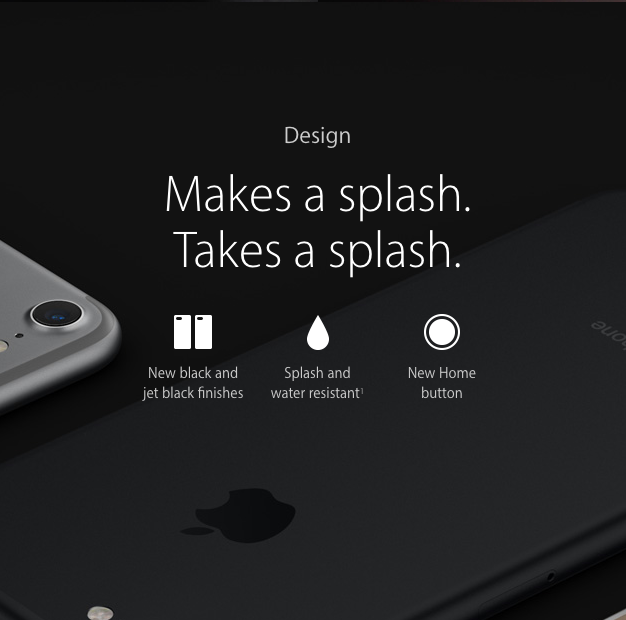
Source: Apple
Year after year, new Apple product announcements get people talking -- whether it’s industry chatter or consumer debate. So how does the tech giant manage to generate buzz about yet another new iPhone, even now?
For one thing, the launch messages tend to be simple and consumer-focused. For example, the iPhone 7 landing page reads that this version “dramatically improves the most important aspects of the iPhone experience.” See that? Experience. Before I even read the list of features that follows, I’m already thinking about which aspects of my iPhone are most important to me, and how much better they’ll be on this new device.
Branding Best Practice: Keep it Simple
Choose the benefits that matter to your customer and build a marketing strategy around them. And don’t forget to keep that marketing message simple and unapologetic -- focusing on too much at once can lead to brand confusion, which might be why 69% of consumers are more likely to recommend a brand based on its simplicity.
Focusing on benefits in a no-frills way can also imply confidence. For example, Apple was noticeably unapologetic about removing the headphone jack from the iPhone 7. Instead, the official announcement proclaimed, “Oh yeah … and the headphone jack from over 100 years ago has been removed (shocker) for the more versatile Lightning port.”
9) Starbucks

Source: TechGenie
Mobile has seen some interesting developments as of late. 51% percent of digital media is consumed via mobile (versus 42% on desktop), and voice search is on the rise. It makes sense for marketers to be focused on mobile, and Starbucks is no exception.
When Starbucks introduced the “Order & Pay” feature of its app in 2014, it saw adoption rates between 4-10% in stores. The brand capitalized and built on that, creating an in-app experience that remembers and recalls your favorite orders, suggests pairings, and guesses where you’d like to pick up your order.
Branding Best Practice: Invest in Mobile Marketing
If you’re not investing time and resources into your mobile marketing strategy, you might want to get started, especially when it comes to building an app for your brand -- 56% of digital time is spent using them.
But if an app is out of reach or not relevant for to your brand (after all, just look at the Trader Joe’s example), how else can you elevate your mobile strategy? Start by making sure your site is mobile-friendly, and look into push notifications or other unique offerings that your organization can use to its advantage.
10) Zappos
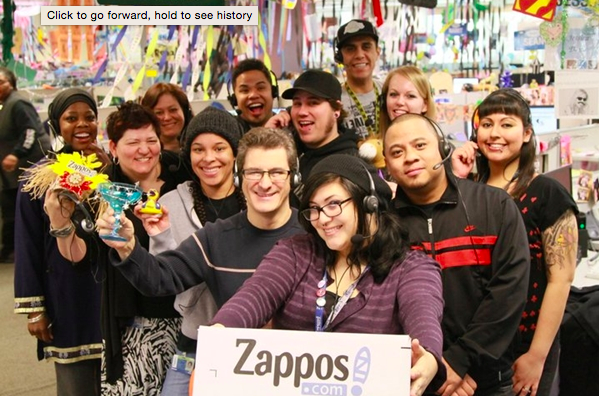
Source: ReferralCandy
Zappos has built its brand around customer service -- a brand that CEO Tony Hsieh has defended and protected over the years, even famously saying, “Zappos is a customer service company that just happens to sell shoes.” At any other company, it might be considered inefficient for a customer service rep to engage in an almost 11-hour phone call with a customer, but at Zappos, that kind of dedication is encouraged.
But it doesn’t stop there. From sending flowers to a bereaving customer, to overnighting free shoes to a best man whose footwear hadn’t made the flight to the wedding, Zappos leads with a customer service story and keeps their fans coming back from more.
Branding Best Practice: Delight Your Customers
In a marketplace where consumers have hundreds and even thousands of choices at their mobile-savvy fingertips, you need to set yourself apart. And sometimes, all your consumer needs to make a decision between you and three other competitors is exceptional service -- especially since U.S. businesses collectively lose about $41 billion dollars each year because of bad customer service. (I suppose sending flowers can’t hurt, either.)
11) TED
As marketers, we have our favorite TED talks. Maybe yours is Simon Sinek explaining the golden circle, or my personal favorite, Susan Cain speaking on the power of introverts. Regardless, TED talks have become a go-to resource for quick, insightful information across almost any topic.
In a time when consumer attention spans are shorter than those of goldfish, TED does what might seem impossible to some marketers. The brand holds five million YouTube subscribers captive for talks that average 20 minutes in length. There’s no flashy light show or catchy theme song -- just solid storytelling that’s largely spread by word of mouth.
Branding Best Practice: Focus on Quality Content
Put time, effort, and money into creating quality content. While you might be able to grab someone’s attention for eight seconds with a catchy headline, valuable content is what will transform that one-time view into a regular reader, and hopefully, a customer. Plus, quality content is imperative to SEO -- without it, your rankings can take a serious hit.
12) Lululemon
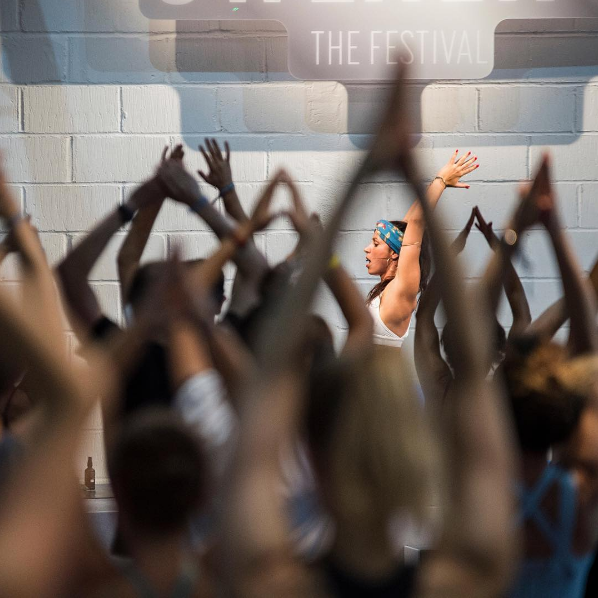
Source: Lululemon
Lululemon is one of the hottest fitness brands in the market today. Ask someone why she spent just short of $100 for a pair of yoga pants, and you might get a lecture on the superior quality of Lululemon’s products. That’s the kind of brand loyalty sought after by every marketer on the planet, and it starts with Lululemon ambassadors.
While consumer word-of-mouth is one form of brand loyalty, Lululemon fosters a more formal type of ambassador in yoga teachers and fitness trainers who have been selected to represent the brand’s values and lifestyle. They lead classes at storefronts on weekends, share photos of themselves wearing the brand, and provide aspirational advertising.
Branding Best Practice: Experiment with Influencer Marketing
Brand ambassadors are a form of influencer marketing -- which, according to Twitter, is responsible for 49% of user purchases. Look at who the movers and shakers are in your industry, and learn how you can partner with them through guest contributions, using, or writing about your product.
13) SoulCycle
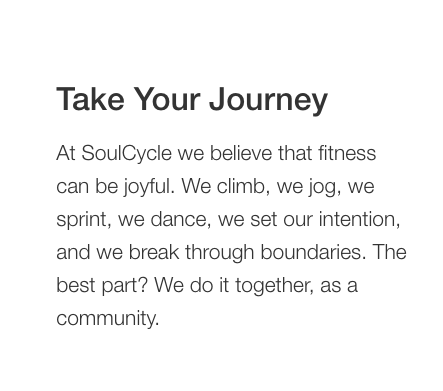
Source: SoulCycle
Telling a colleague that you’re headed to the gym can elicit a number of responses. You might hear, “good for you,” or receive a grimace face that says, “I feel your pain.”
But SoulCycle, similarly to Lululemon, has found a way to rebrand your workout. One visit to its website or Instagram profile is all it takes to find mantras about pushing your body to its limits with your #SoulMates and #SoulSquad. By sending the message that exercise is a community-bound opportunity, SoulCycle makes it seem like less of a chore, and more like an exclusive club.
Branding Best Practice: Market to Your Consumer’s Emotional Side
How can you make your product or service sexier? Consider how you can tap into your client’s emotions, and touch on the things that are important to them. In fact, a study that measured consumers’ brain activity in response to ads found that higher activity indicated a 23% increase in sales volume. And considering that 60% of consumers who feel a “high brand connection” are more likely to make a purchase -- even at a higher price point -- it quite literally pays to understand their potential feelings toward your brand.
14) Life is Good

Source: Life is Good
Life is Good was founded in 1994. Within 11 years, the brand was boasting $50 million in sales -- having never run a single ad -- and $100 million by 2015.
What was the strategy behind that rapid growth and success? Say sibling co-founders John and Bert Jacobs, it was simple -- “rely on the good vibes and social power of their community to spread the word,” according to Inc.
Instead of traditional marketing, Life is Good pours its advertising dollars into different events for its charity, Life is Good Playmakers. In addition to impressive sales, these efforts have resulted in an avid fan following and even partnerships with celebrity musicians.
Branding Best Practice: Think Outside the Advertising Box
Consider new, less traditional forms of advertising -- especially since 84% of Millennials, for example, don’t even like advertising. By sponsoring local events or supporting a charity that aligns with your company’s mission, you could generate more than just good PR. You could also gain fans who respect and appreciate your work. Plus, 80% of consumers believe that corporations can (and should) work to benefit their communities -- a win-win for both brands and the people they serve.
15) Moleskine

Source: The Next Web
Moleskine is not just a notebook. It’s “a free platform for creativity,” Maria Sebregondi, Moleskin’s head of brand equity once said. What’s more, it’s found a way to make paper cool and relevant in the digital age.
The notebook brand expertly balances its heritage past -- touting Hemingway and Picasso among its early brand advocates -- with the digital present, launching a smart notebook and companion app. This balance of yesterday and today helps maintain the brand’s relevance -- and appear to consumers who love the latest tech, but still have nostalgia for paper.
Branding Best Practice: Allow Your Brand to Evolve
Every brand should evolve. Our shortened attention spans aren’t limited to the content we consume -- they apply to the products we adopt, as well. It is possible to maintain your brand’s legacy while also letting your marketing evolve, but it requires being flexible and open to your product changing.
16) Chaco

Source: Chaco
Chaco is a lifestyle and outdoor footwear brand with an active following. Just look at its Instagram profile -- it’s packed with user-generated photos of fans hiking, adventuring, and camping in these colorful sandals. And that’s key -- such bold visuals increase people's willingness to read a piece of content by 80%.
The branding also travels well, hitting up music festivals and gear shops around the country in what Chaco refers to as “Z the World Tour.” The tour allows the brand to interact with consumers in-person, advocate for the product, and raise awareness directly.
Branding Best Practice: Don’t be Afraid to Put a Face with Your Brand
Consider taking your marketing on the road. Sales teams often suggest closing deals through in-person meetings and, sometimes, marketing can follow the same strategy. Want to recruit brand advocates? Let them experience your brand in a tangible way.
17) CrossFit

Source: CrossFit
CrossFit, a workout regimen created by CEO Greg Glassman, is today a billion-dollar business with what some describe as a cult-like following. So what’s in the CrossFit Kool-Aid everyone’s drinking? Great marketing, of course.
Similar to SoulCycle, CrossFit taps into the desire for community. CrossFit’s website wastes no time nodding to that idea with photos of and journal entries from its “elite” pool of members. The brand could have called them “testimonials,” but CrossFit’s careful use of language ensures that its messaging reads more like a movement, and less like a product. Another example of this strategic word choice: describing itself as a phenomenon that’s “harnessing [a] natural camaraderie.”
Branding Best Practice: Inspire Ownership in Your Brand
How can you give your audience more ownership in your brand? Simple language tweaks like calling your audience a “community” instead of “members” can go a long way in building brand advocates. That goes back to the idea of shared values that we mentioned earlier -- 64% of consumers cite that as the main reason for even having a relationship with a brand.
18) GoPro
GoPro makes handheld video cameras that are high quality and easy to use. The return has been huge -- in 2011, less than a decade after being founded, the brand saw a 112% increase in net income after spending only $50,515 on marketing. In 2013, marketing costs went up by $41,000 and income by $28 million.
Maybe that has something to do with the company’s expertise in putting user-generated content to work for their brand. By simply encouraging its audience to use the #GoPro hashtag when posting images captured by its camera, GoPro succeeded in building strong brand loyalty and a powerful content machine. At least, that’s how I see a company with 6,000 user-branded videos uploaded to YouTube every day.
Branding Best Practice: User-Generated Content is King
How is your audience using your product or service? That information might already be out there and on social media -- it just doesn’t have a branded hashtag yet. Once you get that information, ask users to tag your brand or submit content for you to post on your own networks. Some companies, like West Elm, are hopping on this trend by almost exclusively featuring user-generated content on their social media feeds — a smart strategy that can conserve your marketing budget.
19) Philz Coffee

Source: MINT
Philz is a California coffee chain with a rabid following and well-cared for social media channels. In 2014, when content marketer and Philz devotee Caitlin Roberson tweeted her displeasure at the brand’s then-generic Twitter responses, Philz tweeted back their apologies. Today, you’ll find genuine and customized responses to followers on each of the coffee house’s social media channels -- especially on Twitter.
For a business that built its brand on delicious coffee and a small shop vibe, that’s an important part of the marketing strategy. Could the social media team get by just fine by continuing to post generic responses to their followers? Probably. But going the extra few steps leaves their fans with anything but a bitter taste -- in fact, a personalized customer service experience on Twitter, for example, leaves people 83% more satisfied.
Branding Best Practice: Talk to Your Customers Like They’re Real People
Make sure you’re interacting with your consumers in a genuine and rewarding way. Yes, it takes time to thoughtfully respond to customers through on social media and customer support channels, which are sometimes one in the same. But the benefit to both your brand and your consumers, however, will be well worth the extra brainpower -- since Roberson’s noted interaction with Philz, the brand’s Twitter following has nearly doubled.
If You Build It...
Take time to really understand what motivates and moves your audience, and create a content and brand marketing plan accordingly. Stay confident and genuine in your message. Then, share it with your audience in a relatable way. You might just find yourself with advocates who believe in your brand as much as you do.
How are you building your brand’s following? Let us know in the comments.
from HubSpot Marketing Blog http://blog.hubspot.com/marketing/brands-with-cult-following
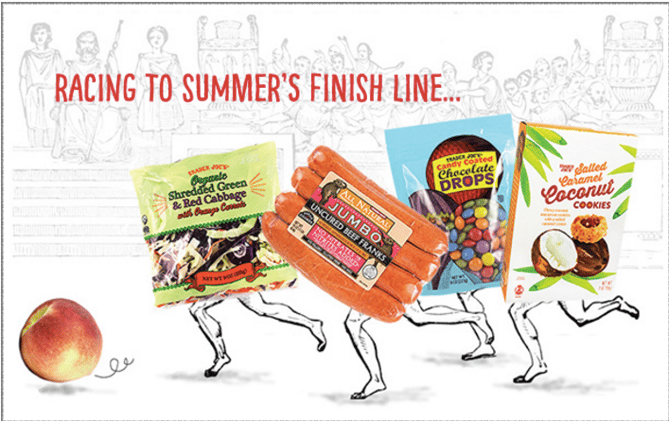

No comments:
Post a Comment